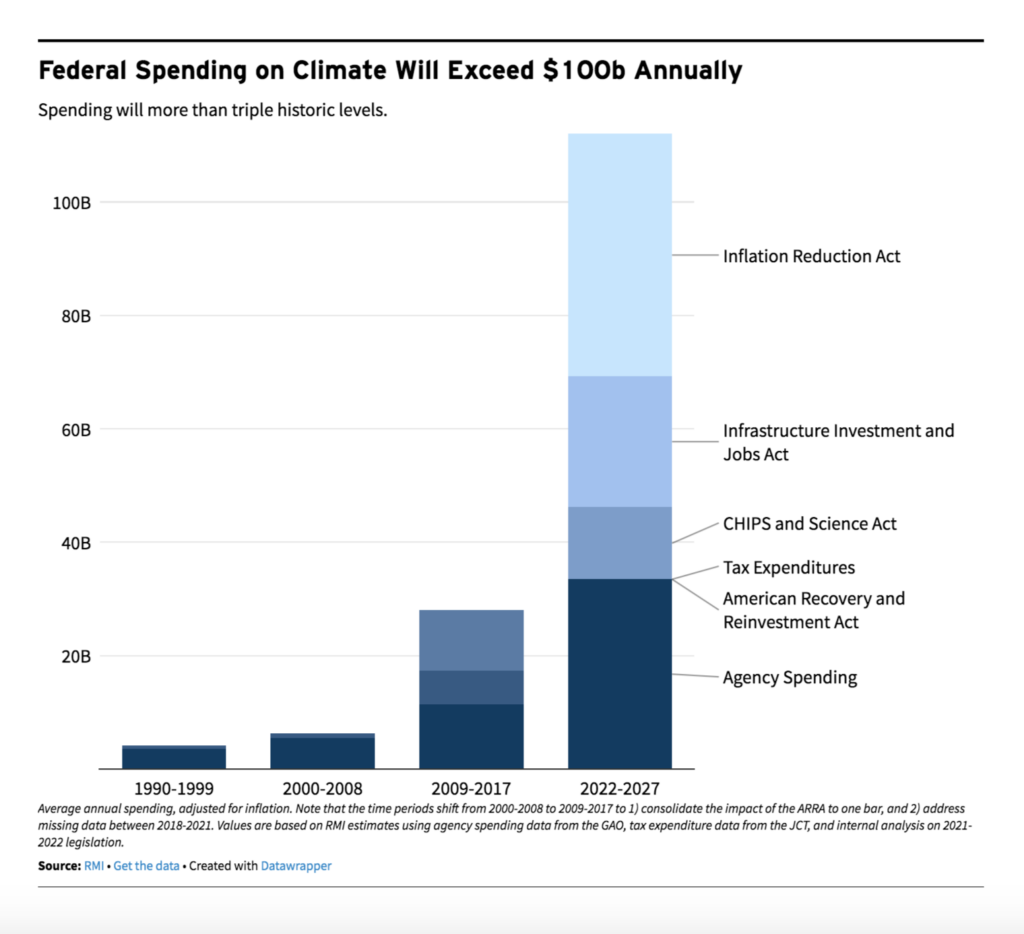Lachlan Carey in Phenomenal World:
Biden’s green industrial strategy is both impressive in scale and in its passage amidst highly complex political circumstances. After fractious negotiations, Congress authorized over $4 trillion in new investment between its four major pieces of economic legislation. Officially, around $500 billion of that spending goes towards climate-related spending, most of which is contained in the Inflation Reduction Act. According to our estimates, the US federal government will spend an average of over $100 billion each year on climate mitigation over the next ten years, about two and a half times the annual average from 2009-2017.

Even this figure is likely a significant underestimate. Since many of the tax credits contained in IRA are uncapped, total public expenditure is limited only by private demand for these incentives. If deployment of key clean energy technologies, such as solar or green hydrogen, were to be in line with a 2050 net-zero pathway, we estimate that total spending in the IRA alone could reach $1 trillion. A recent Brookings analysis reached a similar figure even without the net-zero constraint. This discrepancy is particularly large in renewable energy spending, which could see twice as much spending in a climate-aligned pathway—green hydrogen could see five times the spending, and the electric vehicle (EV) supply chain a staggering ten times the official Congressional Budget Office (CBO) estimates if consumers rush to buy cheaper EVs.
More here.
